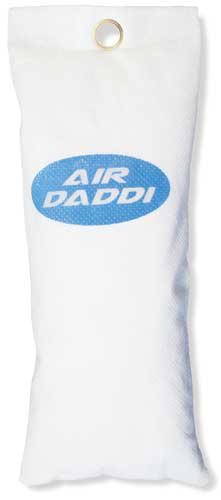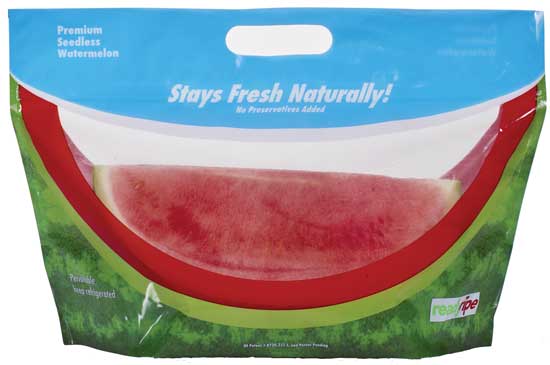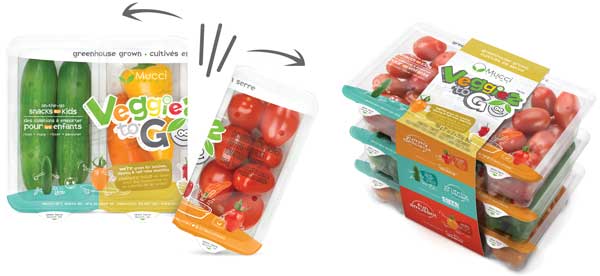Packaging That Keeps Produce Fresh
PACKAGING
Packaging produce so that it arrives fresh to consumers requires finesse. Produce packaging plays different roles in business-to-business (B2B) and retailer-to-consumer delivery. In urban areas, produce loss occurs mostly during the retailer-to-consumer exchange, and in rural areas, more produce is lost from farms to retailers. In both situations, reducing food waste by extending produce shelf life is critical.
In the United States, 35%–50% of fresh fruits and vegetables are wasted; most of this occurs post-retail. This means that produce goes through an energy-intensive supply chain and then is not consumed. Reducing consumers’ produce waste would result in a more cost-effective, efficient, and environmentally friendly food supply. In other regions such as Latin America, much food waste occurs in agricultural and post-harvest handling. While loss at this stage represents less environmental impact than consumer-driven produce loss, loss rates of 40% for produce are common at this early stage. Packaging needs to provide more cost-effective and sustainable solutions to reduce this waste. In B2B shipments of produce, packaging solutions include cushioning to prevent physical damage, providing dynamic controlled atmospheres, and enabling reduced microbial loads. At retail, containers for precut produce, controlled atmospheres, and active packaging extend produce shelf life in an appealing manner.
Keeping Produce Fresh B2B
Packaging suitable for shipping produce from farms to retailers or from distributors to food processors needs to provide physical protection, keep vegetables and fruits fresh, aid in on-time ripening, allow for retail-friendly presentation, and control microbial loads and enzymatic activity. B2B produce packaging uses recyclable and/or returnable cases, cushioning material, and venting to allow for rapid modulation of controlled atmosphere storage and temperatures.
Returnable and recyclable options include wood fiber–based corrugated trays, high-density polyethylene totes, and polyethylene terephthalate (PET) clamshells, corrugated polypropylene by Coroplast (coroplast.com), and paper bags. The common European footprint standard for produce trays enables consistent stackable produce trays, simplifies supply chain, and optimizes transport logistics by increasing efficiency in produce handling. Material for cushioning is produce-dependent, and common methods such as foam nets to wrap individual produce, single-face corrugation, and internal support systems within cases are being combined with returnable packaging cases to provide easily reusable packaging systems. Cases and cushioning materials are also increasingly integrated with PET clamshells that provide static and dynamic support as well as a retail-friendly display. These advances reduce handling and food waste.
 Packaging and distribution technologies to reduce produce loss involve controlling ripening, keeping microbial levels low, and stalling enzymatic activity. Dynamic controlled atmospheres are commonly used throughout the produce distribution process to allow produce to ripen as it is needed by retailers. Con-trolled ripening is typically monitored based on the ethanol or chlorophyll levels of vegetables and fruits. And gases such as nitric oxide decrease rates of ripening. Continuous control of respiration rates to maintain shelf life in warehouses and during distribution is important and has been the focus of companies such as Moxiyo (moxiyo.com), which offers Air Daddi for warehoused products. “Placing Air Daddi in front of cooling vents within walk-in retailer coolers reduces air temperatures rapidly as well as imparts [carbon dioxide] into the atmosphere,” explains Peter Fuller, inventor and president of Moxiyo. “Interestingly, since carbon dioxide permeability is higher than oxygen through packaging, the carbon dioxide generated by the Air Daddi permeates through packaging to increase shelf life.” International outbreaks of Listeria, Salmonella, and E. Coli that are associated with produce have caused distributors to increase safety measures for post-harvest processing of fresh produce. Treatments that control microbial loads include the use of cold treatments for imported produce, chlorine-based solutions, mold inhibitors, peroxyacetic acid, organic acids, hydrogen peroxide, ozone, and 1-methylcyclopropene.
Packaging and distribution technologies to reduce produce loss involve controlling ripening, keeping microbial levels low, and stalling enzymatic activity. Dynamic controlled atmospheres are commonly used throughout the produce distribution process to allow produce to ripen as it is needed by retailers. Con-trolled ripening is typically monitored based on the ethanol or chlorophyll levels of vegetables and fruits. And gases such as nitric oxide decrease rates of ripening. Continuous control of respiration rates to maintain shelf life in warehouses and during distribution is important and has been the focus of companies such as Moxiyo (moxiyo.com), which offers Air Daddi for warehoused products. “Placing Air Daddi in front of cooling vents within walk-in retailer coolers reduces air temperatures rapidly as well as imparts [carbon dioxide] into the atmosphere,” explains Peter Fuller, inventor and president of Moxiyo. “Interestingly, since carbon dioxide permeability is higher than oxygen through packaging, the carbon dioxide generated by the Air Daddi permeates through packaging to increase shelf life.” International outbreaks of Listeria, Salmonella, and E. Coli that are associated with produce have caused distributors to increase safety measures for post-harvest processing of fresh produce. Treatments that control microbial loads include the use of cold treatments for imported produce, chlorine-based solutions, mold inhibitors, peroxyacetic acid, organic acids, hydrogen peroxide, ozone, and 1-methylcyclopropene.
Enzymatic activity is controlled with carbon dioxide, ascorbic acid, and calcium-based solutions. Altering package atmosphere also helps modulate ripening and extend product shelf life. Flushing a package with gas increases product shelf life by creating an artificial atmosphere, but as produce respires, packaging needs to allow the exchange of gases to slow respiration rates. Continuous regulation of the atmosphere within a package is needed for optimal produce shelf life. This helps reduce shrinkage of B2B produce as well as reduce produce loss in consumer refrigerators. Moxiyo’s sachets extend produce shelf life within a package by supplying a continuously regulated supply of carbon dioxide for 35 days.
Fresh Produce for Retailers and Consumers
Suppliers of produce packaging are stepping up to meet the changing needs of retailers and consumers. Produce packaging for retail display allows produce to be readily stocked, temperature-controlled, and monitored to reduce labor and waste. Consumers want produce that conveys freshness and variety and allows a rapid assessment of ripeness. Added shelf life appeals to both retailers and consumers, and this reduces the economic loss associated with discarding undesirable produce. Within the United States, produce loss at retail is about 11% and loss after consumer purchase is about 25%. This is the highest among nations for which data are available.
 The beauty of cut produce elegantly displayed in markets such as the Ota and Tsukiji Markets in Japan attracts buyers who want to see inside the fruits and vegetables they are buying to better assess quality. But outside such high-volume fresh markets, retail packaging is required to keep cut produce fresh. The ability to see cut produce within a package builds consumer trust and increases retail sales. Packaging solutions to keep produce fresh at retail and for consumers include containers for precut produce, controlled atmospheres, and antimicrobials. Ready-to-eat cut produce in single-serving or multiple-serving size containers is a major trend that meets retailer and consumer needs: Prepared produce is sold in a ready-to-eat state, eliminating guesswork associated with assessing ripeness and discarding inedible produce because all the produce purchased is edible. Many packaging formats are used to package precut produce. For example, the readyripe pouch by Maglio (maglioproduce.com) effectively tents over cut watermelon to limit product-package contact so that less wicking of moisture and weeping of water from the watermelon occurs, increasing shelf life. Maglio has been adding value by extending the shelf life of produce since 1902. Sam Maglio, president of Maglio Companies, credits the readyripe pouch with adding tangible value for retailers and consumers through functional packaging. “A time-motion-cost study showed that when the readyripe bag was used to package cut watermelon, the increased shelf life of eight days allowed retailers to decrease labor associated with, and frequency of, filling bags and cleaning preparation areas,” Maglio says. “Use of the readyripe anti-fog pouch resulted in 67% less shrink within stores, less out-of-stocks, and a 20% increase in sales per store.”
The beauty of cut produce elegantly displayed in markets such as the Ota and Tsukiji Markets in Japan attracts buyers who want to see inside the fruits and vegetables they are buying to better assess quality. But outside such high-volume fresh markets, retail packaging is required to keep cut produce fresh. The ability to see cut produce within a package builds consumer trust and increases retail sales. Packaging solutions to keep produce fresh at retail and for consumers include containers for precut produce, controlled atmospheres, and antimicrobials. Ready-to-eat cut produce in single-serving or multiple-serving size containers is a major trend that meets retailer and consumer needs: Prepared produce is sold in a ready-to-eat state, eliminating guesswork associated with assessing ripeness and discarding inedible produce because all the produce purchased is edible. Many packaging formats are used to package precut produce. For example, the readyripe pouch by Maglio (maglioproduce.com) effectively tents over cut watermelon to limit product-package contact so that less wicking of moisture and weeping of water from the watermelon occurs, increasing shelf life. Maglio has been adding value by extending the shelf life of produce since 1902. Sam Maglio, president of Maglio Companies, credits the readyripe pouch with adding tangible value for retailers and consumers through functional packaging. “A time-motion-cost study showed that when the readyripe bag was used to package cut watermelon, the increased shelf life of eight days allowed retailers to decrease labor associated with, and frequency of, filling bags and cleaning preparation areas,” Maglio says. “Use of the readyripe anti-fog pouch resulted in 67% less shrink within stores, less out-of-stocks, and a 20% increase in sales per store.”
 Veggies to Go packaging by Mucci Farms (muccifarms.com) appeals to kids on the go, reduces food waste, and is stackable. Each section of the three PET bases with easy peel lidding contains either tomatoes, peppers, or cucumbers in three-ounce servings that are separable and transportable. The consistent quality of the greenhouse-grown produce allows greater investment in packaging to preserve produce. Steamable bags containing washed vegetables provide a convenient way to cook the vegetables.
Veggies to Go packaging by Mucci Farms (muccifarms.com) appeals to kids on the go, reduces food waste, and is stackable. Each section of the three PET bases with easy peel lidding contains either tomatoes, peppers, or cucumbers in three-ounce servings that are separable and transportable. The consistent quality of the greenhouse-grown produce allows greater investment in packaging to preserve produce. Steamable bags containing washed vegetables provide a convenient way to cook the vegetables.
Active packaging that inhibits degradative reactions in produce is considered an indirect food additive and governed by international regulations. Migration of active compounds from packaging are a function of the molecular volume, orientation, and activation energy of migrants to move through the polymer matrix as well as other factors. Researchers at the Fraunhofer Institute have conducted research and modeling in this area. Silver nitrate is commonly used in the nanoparticle state to provide broad-spectrum antimicrobial effectiveness. Lauric arginate ester and pads containing sodium metabisulfite reduce decay of grapes and berries. Compounds such as oregano, cinnamon, and horseradish—all of which have preservation properties—have sidetracked effective development in this area because of active ingredients such as thymol, carvacrol, cinnamaldehyde, and allyl isothiocyanate. Another example of effective active packaging for produce is the controlled release of hexanal and other aldehydes to inhibit compounds, such as phospholipase D, which catalyzes the breakdown of plant cells. Research has shown the release of hexanal from a polymer package can be achieved by embedding the hexanal precursor imidazolidine within the polymer.
Additional Research Needs
Areas for further research in produce packaging are numerous, centering on reducing produce waste by extending shelf life. Over the past 35 years, Maglio has seen shifts in the packaging and processing of produce delivery to consumers. “Our packaging met consumer needs in whole produce, then cut produce and will continue to evolve with process innovations such as HPP that allow consumers to essentially drink their produce,” Maglio says. Research is needed to refine other processes that extend produce shelf life while maintaining nutrient quality. Market research on what drives consumer preferences for specific packaging types such as flow-wrapped or over-wrapped produce is also needed. While design work on integrating returnable standardized tertiary packaging within the value chain is forthcoming, keeping produce fresh when it is picked closer to the ripened state continues to be an area of much needed research.
 Claire Koelsch Sand, PhD, Contributing Editor
Claire Koelsch Sand, PhD, Contributing Editor
CEO, Packaging Technology and Research
Adjunct Professor, Michigan State Univ. and California Polytechnic State Univ.
[email protected]
